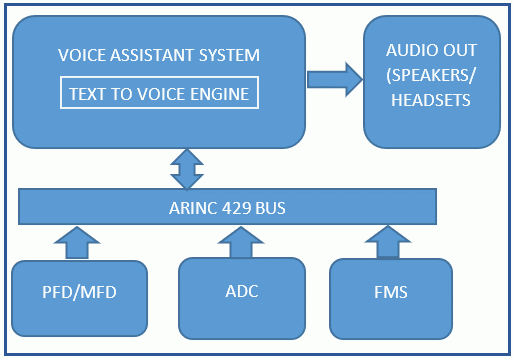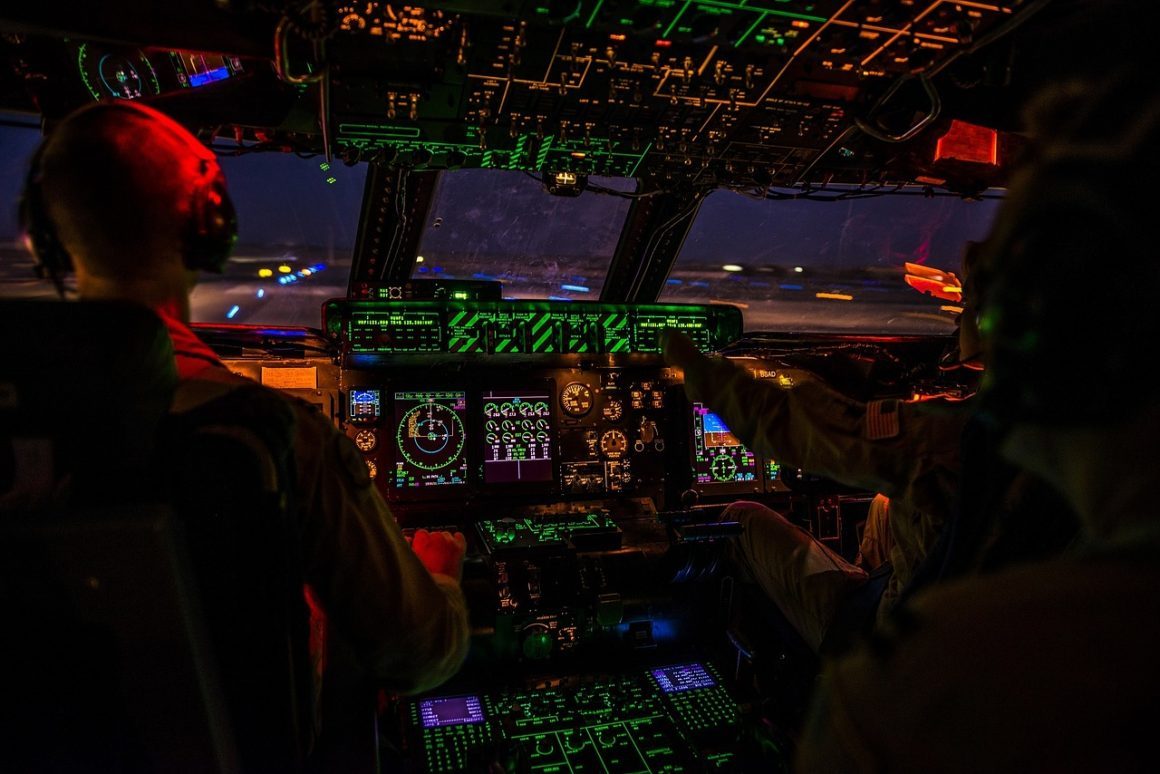This article explores the role of voice messages for cockpit display systems in avionics. In vehicle navigation systems like GPS, the voice guides the driver to take necessary action (for example, turn or take the next exit from the freeway) without looking at the display or maps.
Similarly, a voice-assistance system in cockpits can help the pilots to hear specific configured messages while their vision is busy with other controls. In this article, we will consider some real-world scenarios that demonstrate the usefulness of voice assistance for pilots.
The proposed system
As an add-on feature to traditional displays, this system will read out periodic voice messages for primary flight parameters, such as altitude, flight speed, etc. Only when enabled, these voice messages can be sent to the pilot and copilot’s headsets. This feature will be auto-disabled while the aircraft is ascending or descending.
In addition, the pilot can choose to listen to “on-demand” parameters during emergency scenarios. Redundancy is always good and welcomed in avionics. This system will automatically provide the pilots with information periodically and on demand — they need not look for it. In the event that the pilots notice any unusual data points, they can take corrective actions immediately.
An example of a voice message that might be used could be:
The pilot/copilot can hear these vital flight parameters without even looking at the display. Millions of dollars are spent on heads-up displays (HUDs) to enable the same functionality.
In the next phase, we can add navigation data to the voice messages. The pilot can listen to waypoint details — for example, approaching a waypoint and any deviation with which the flight crossed any particular waypoint. The system can read out approach angles and all required navigation details. How will this help?
- This will be helpful in bad weather and in the unforeseen event of display failure. The pilot/copilot can still hear the messages.
- Status messages can be added such as “Flight is aligned to approach angle” for that particular waypoint.

The system will fetch various parameters from existing aircraft systems such as primary flight displays/multi-function displays (PFDs/MFDs), air data computers (ADC), and flight management systems (FMS) over the ARINC-429 bus or any other bus that carries the required data. The text-to-voice engine will convert the information into voice messages. The audio unit will play the voice messages over speakers or headsets.

Use cases based on real-life scenarios
Scenario #1: Consider a flight from Boston (BOS) to Los Angeles (LAX)
Once the pilots have entered the cockpit while the aircraft is still parked, the messages will welcome the pilots and brief them about the plan for that particular flight. For example,:
“The following waypoints are in our course — Waypoint 1:…”
The voice feature will be automatically disabled when the aircraft receives a “Go” signal from parking. The pilot and copilot in the taxi way can communicate to ATC via radio, followed by the takeoff.
Voice messages will be enabled at cruising altitude, typically when the seat-belt sign goes off. Cruising speed, altitude, and weather messages will also be relayed. In terms of details, the following flight altitude data and PFD parameters will be relayed: current and heading speed, current and heading altitude, current and heading direction, flap position, etc. In addition, the next waypoint details and expected time of arrival will be played.
While in the air, the pilot/copilot can listen to these messages. For example, at an interval of every 10 minutes, the following voice messages will be heard (of course, the values of the parameters will change as per actual data at that instant of flight):
Flight speed is 480 knots
Heading 8 degrees South-West
Banking is zero degrees
Throttle is at 70 percent
Next waypoint is STAYC
During the descent phase, the voice feature will be disabled automatically. It will be enabled when the flight has landed and is halted, at which time the system will provide a flight summary message. For example: “We have landed at LAX airport, outside temperature is 3 degrees Celsius, average speed was 300 knots, fuel level is 30 percent, etc.”
Scenario #2: Turbulence due to bad weather
Imagine an aircraft cruising at an altitude of 32,000 feet when it encounters bad weather or heavy turbulence. Suppose that this leads the aircraft to an unusual attitude because of heavy vibration. As a result, the pilots will face significant difficulty in maneuvering the aircraft. At the same time, it is difficult or nearly impossible for them to read crucial flight parameters on the display. In such a situation, it is important for the pilots to know the aircraft’s attitude and other critical parameters like airspeed, bank angle, etc., in order to regain the control and return to the desired course.
Recently, there were reports of such an incident in southwest China. The pilot of a Sichuan Airlines flight made an emergency landing when the cockpit windshield cracked and the copilot was “sucked halfway out” of the plane. Captain Liu Chuanjian landed the Airbus A319 manually. His exact words about the incident were as follows:
In light of this scenario, we can say that voice assistance may prove to be very helpful in bad weather and in any unforeseen situation of display failure. Even when it becomes difficult to read the display, the pilot/copilot can still hear the messages.
Scenario #3: Communication gap between pilot and copilot
Consider a situation when either the pilot or copilot is in command and sets any parameter/control as per his/her action. When the other pilot returns to take control, he/she can listen to critical flight parameters “on demand.”
As an example of where such a capability might be useful, consider the real-world incident that occurred when a copilot set the nose up in a loss of thrust scenario and the aircraft started to stall. When the pilot returned and came to know about this action, it was too late to save the aircraft. In such situations, though trained and skilled, pilots may fail to check critical parameters. The following messages would have helped in this particular situation:
First instance of broadcast:
Throttle is at 60 percent
Flight speed is 480 knots
Flight altitude 30,000 feet
Second instance of broadcast:
Throttle is at 60 percent
Flight speed is 410 knots
Flight altitude 30,500 feet
The copilot intended to gain altitude by performing a nose-up, which leads to increase in angle of attack with the same throttle position. However, in the second instance of the voice messages, it is evident that the aircraft is at almost the same altitude and losing speed. Based on this information, the copilot could have corrected his action by increasing the engine throttle position and saving the aircraft from being stalled.
Conclusion
As the real-world scenarios presented above show, an add-on system for pilots and copilots to listen to vital flight parameters without looking down can be extremely useful. The Voice Assistant System for Pilots can be configured to send only specific messages based on specific phases of the flight, thereby ensuring that it provides the pilots with maximum value with minimal disturbance.
Not only can this system help the pilot/copilot in regular conditions, it can be a savior in unforeseen situations of display failure or bad weather. This shows that voice-assistance messages for pilots can play a crucial role in avionics solutions.













